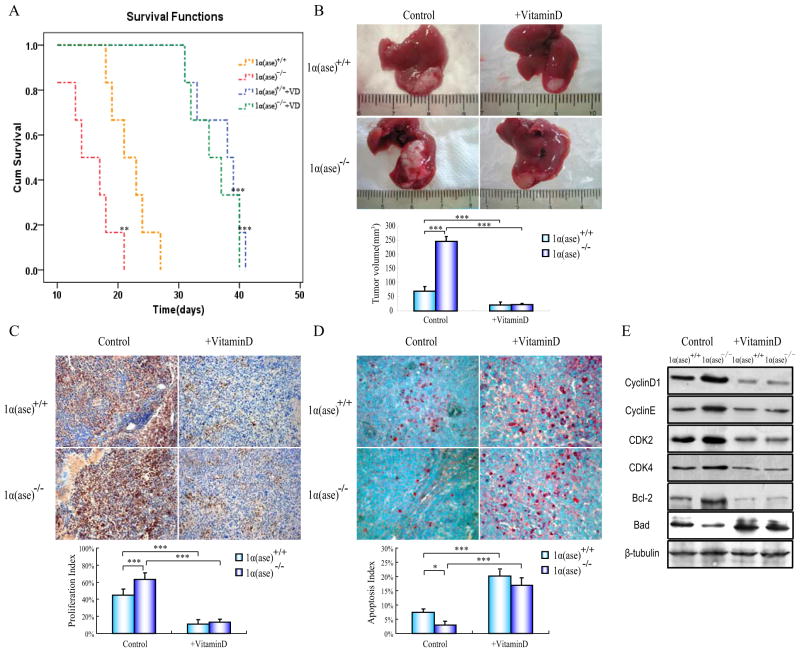Fig. (2). 1α(OH)ase ablation promotes tumor development in allograft transplanted transplanted mice.
Babl/c background derived H22 cells (1x106) were implanted to the 1α(ase)+/+ or 1α(ase)−/− mice, and twenty-four hours after inoculation, the animals were randomly assigned to either the treatment intraperitoneal injection 0.1 μg/kg 1,25-(OH)2D3 or propylene glycol (control group) per day. (A) Overall survival time analysis of HCC transplanted 1α(ase)+/+ and 1α(ase)−/− mice. After H22 cell inoculation and 1,25-(OH)2D3 treatment, each mouse’s survival time was documented and made up to the survival curve. Compared with the PBS-injected 1α(OH)ase+/+ group (yellow dotted line): **p<0.01, ***p<0.001 (B) Gross appearances of representative livers with transplanted tumors in either normal or 1,25(OH)2D3-treated 1α(ase)+/+ and 1α(ase)−/− mice (n=6). (C) PCNA immunohistochemistry staining of representative tumor slices from either normal or 1,25(OH)2D3-treated 1α(ase)+/+ and 1α(ase)−/− mice (magnification 200x). (D) TUNEL staining of representative tumor slices from either 1,25(OH)2D3-untreated or -treated 1α(ase)+/+ and 1α(ase)−/− mice (magnification 400x). (E) Immunoblotting results of cell cycle and apoptosis-related proteins in transplanted tumors from either 1,25(OH)2D3-untreated or -treated 1α(ase)+/+ and 1α(ase)−/− mice. The results are representative of at least 3 independent samples. *p<0.05,***p<0.001.

